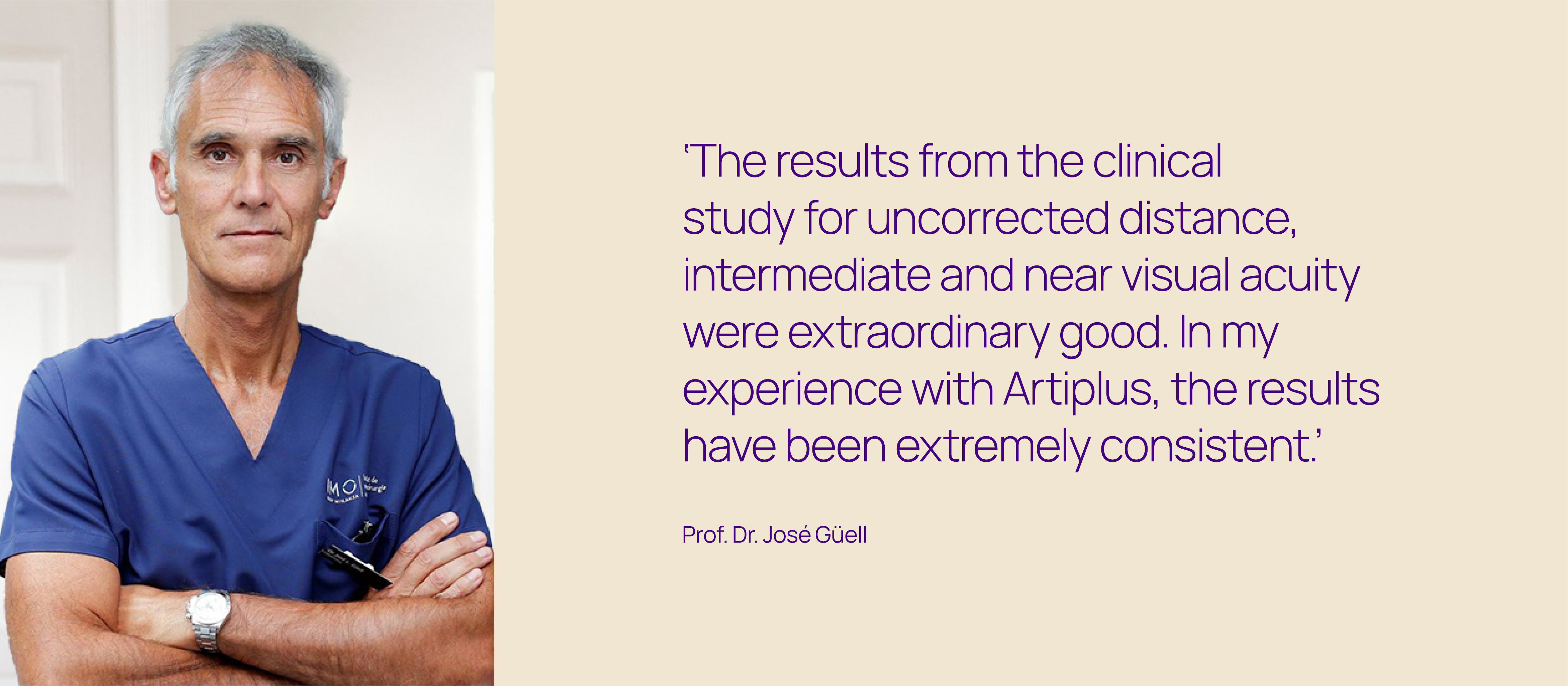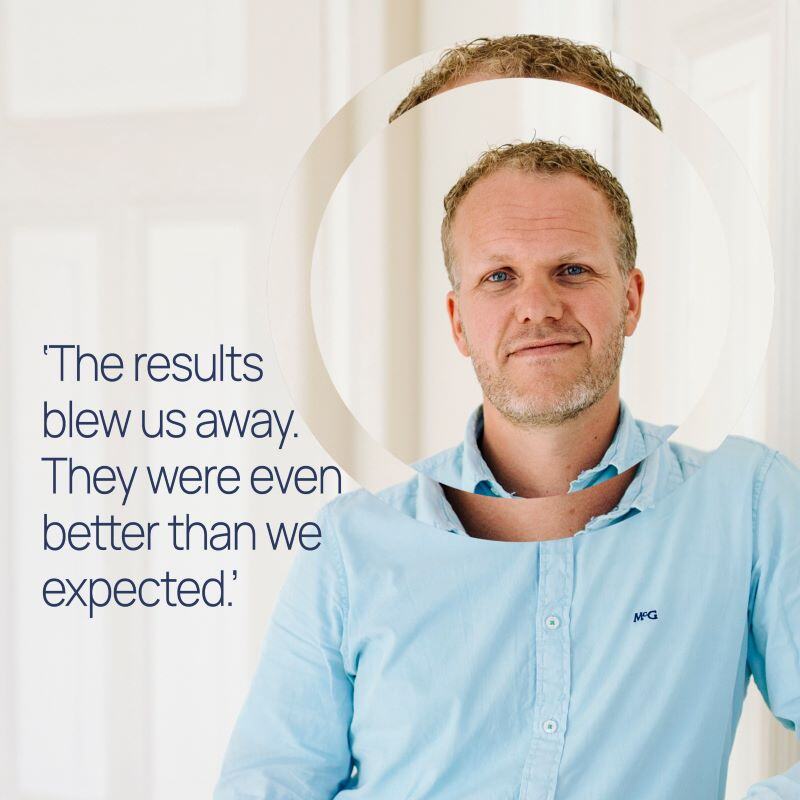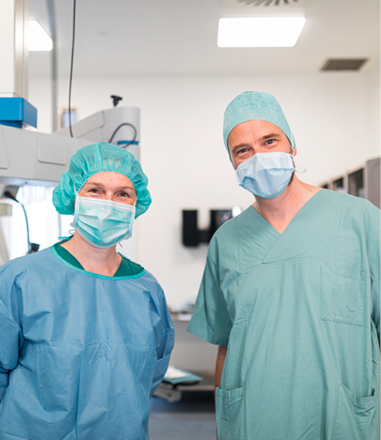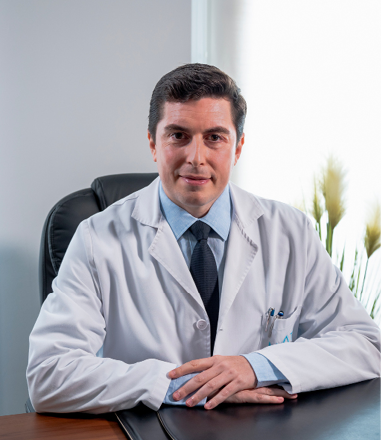Hi Erwin, can you tell us something about the new Artiplus IOL? What is the purpose of this new lens?
Artiplus is one of the first Phakic Presbyopia correcting lenses on the market. We used our trusted Artiflex platform, which has been on the market for over 20 years, together with the unique CTF-technology from our presbyopic correcting cataract IOL for the optic. This way we created a new lens with a completely new purpose. With Artiplus we can help patients who are relatively young, early 40’s, to correct their refractive errors and presbyopia. Patients can see very clearly from a distance, they can work on the computer at intermediate distance, and they can read their cellphones without any correction.
What was your first thought when your engineers showed you this lens concept?
I instantly thought that this is a novel product. It allows surgeons to treat relatively young Presbyops who don’t have viable or suitable options. Of course, there are presbyopic laser solutions, but they are not very popular due to their side effects. If we can offer a solution that provides patients with a better quality of vision, then it’s definitely a treatment option that could outperform available alternatives.
You already mentioned the CTF-optic. What makes this optic special?
The main difference from other lenses is that we have a multi-segmented optic instead of the more common rings. We also use a refractive lens design because we believe that this more closely matches natural vision. The optic itself has 11 segments, which generate elongated focal points for smooth transitions between far and near vision, providing high-quality vision.
Is it a good alternative for laser even for the low diopters?
Most people are aware of laser techniques for the correction of myopia and hyperopia. The laser solutions for the correction of presbyopia are not very popular. It is known that 30% of their patients experience a lack of quality in vision. There is a group of patients where you really notice a degradation or a reduction in their quality of vision after the laser surgery has been performed.
We completed the six-month analysis of our clinical trial data, and we don’t observe that. On average, the patients are highly satisfied with the vision they achieve with their uncorrected vision after the implantation of an Artiplus lens. We looked at symptoms like glare, halos and starbursts, and when you compare those results with PresbyLASIK or what we know from trifocals, we perform much better. So that’s one of the main benefits of this product.
Artiplus is an iris-fixated IOL. What would you describe as the main benefits of this technique?
In general, one of the main benefits of an iris-fixated IOL is the “one size fits all” principle. You can directly center the lens over the pupil. An iris-fixated IOL is more pupil-independent and more tolerant for decentration. If you place a lens in the posterior chamber, you face different sizes, depending on the width of the eye. In a certain percentage of patients, surgeons may accidentally select the wrong size. That can result in adverse events. We don’t have those issues. Once patients meet the inclusion criteria, we have one size that fits in the anterior chamber without any negative side effects.
Some surgeons ask us questions about a supposed higher risk of endothelial cell loss. That is a bit of a bias we’re facing. Back in the late 1970’s, when Prof. Dr. Worst developed the first iris-fixated lenses, we didn’t have today’s technological capabilities. Some patients received lenses that we wouldn’t implant with current knowledge, leading to increased endothelial cell loss in a small percentage of cases. Today, advanced technology allows excellent preoperative screenings. And we know so much more about the product and provide precise information to patients. These are two key improvements. As a result, the risk of endothelial cell problems is very low. Clinical studies show that, on average, endothelial cell loss is comparable to that is observed after cataract surgery or even un-operated eyes when all criteria are adequately followed.

What was the set-up of the clinical trial?
We did a multi-centered clinical study with nine sides in Europe and South Korea. The good thing is that when you have such a novel product as Artiplus, the investigating doctors are enthusiastic and highly engaged. We had a great collaboration in fine-tuning the patient selection and inclusion criteria, which resulted in excellent outcomes.
Can you tell us something about the results?
The results blew us away. They were even better than we expected. The same goes for the investigators: patient satisfaction levels are high, with all of the patients in the trial reporting that they are either satisfied or very satisfied with the procedure's outcome. The defocus curve shows that the lens's performance from far up until 30 cm is excellent. It is 0.8 decimals or better. It’s probably best in class.
What surprised me the most were the levels of visual acuity that the patients achieved uncorrected. Some patients were, for example, high myopic from minus 8 to minus 10. Uncorrected, they’re functionally blind. After the implementation of Artiplus, they saw uncorrected for distance 100% or better. So 1.0 decimals or better. At the same time, we’re also providing them with excellent uncorrected visual acuity. That’s a big life changer for these patients, as they used to rely on glasses for basically all activities, like driving a car and reading. Now, you’re providing them with an option that allows them to be completely free of glasses. This truly creates the ‘wow’ effect.
It makes me personally proud that we could achieve such high patient satisfaction rates. All investigators said that once the product is CE certified after this clinical trial, they will continue using it. We truly accomplished something remarkable with this lens.
Artiplus is already available in South Korea. Are the results in the field as good as those in the clinical trial?
We were able to launch commercially in South Korea earlier. We are seeing the same great results in the Korean market that we achieved in the clinical study.
How would you describe the ideal patient for Artiplus?
The ideal patient is a patient who is really motivated to get rid of their glasses for near vision. But, if they also have refractive eras like myopia or mild myopia, this is also a good option. It can be used for a large group of patients, from hyperopia to myopia. And we are working on the Toric version, so we can treat almost all patients who are willing to get rid of their presbyopia correcting glasses.
And our final question: is this our best lens ever?
I think so, yes. The results of the clinical trial speak for themselves. We’re bringing together two worlds: iris-fixation and the CTF optic. The merger of these two systems has probably led to our best lens so far.
Oph The Record Magazine
Want to read more articles like this? Download Oph The Record here.
Always want to be the first to receive the newest edition? Subscribe here.


%20magazine/2024/OTR%202024%20-%20Sjoerd%20blog_header_800x450.jpg)

